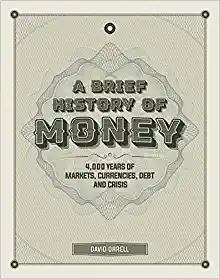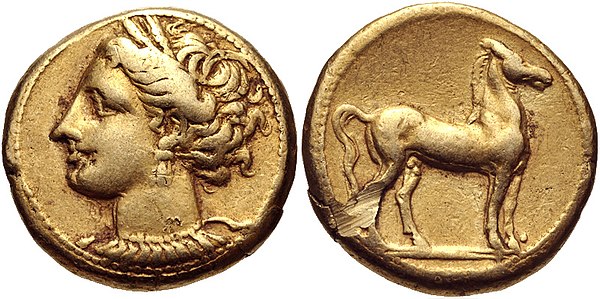
PREV ARTICLE
NEXT ARTICLE
FULL ISSUE
PREV FULL ISSUE
MONEY AND BOOKKEEPINGFrom the Delancey Place blog comes this excerpt from A Brief History of Money: 4,000 Years of Markets, Currencies, Debt, and Crisis by David Orrell. I was unaware of this title. Interesting background. Thanks to Pablo Hoffman for passing this along. -Editor
"The fall of the Roman Empire saw a drastic reduction in trading activities, markets, and even the size of cities, with the population of Rome declining from as many as a million in the 2nd century AD, to about 30,000 by AD 550. The power vacuum was filled by the Christian and Islamic religious authorities who, instead of stamping out coins to pay soldiers, preferred to hoard precious metals in churches and monasteries, often melting it down as decoration for sacred symbols. "One result of this transformation -- versions of which occurred also in China and India -- was that money became increasingly virtual. Like the Sumerian shekel, it was an abstract score-keeping device more than something you could weigh in your hand. And once again, the birthplace of this next monetary revolution was in Mesopotamia -- with the difference that this time it was led by Islamic money lenders. As today, Islamic finance did not allow usury, but did permit profit-sharing, or charging a range of fees. The system relied heavily on credit instruments, including the promissory notes known as sakk, or 'cheques'. The fact that such transactions were backed only by a signature meant that in business a person's reputation or credibility (from the Latin credere for believe or trust) was all-important. "As seen in the previous chapter, the invention of money was closely tied to the invention of numbers. It is therefore unsurprising that this developing credit system coincided with the mathematical discovery of negative numbers (a concept which will be familiar to anyone who has overextended their credit card). The first explanation of how to work with both negative numbers, and the number zero was given in the 7th century by the Indian mathematician Brahmagupta, whose book The Opening of the Universe was written entirely in verse. He called positive numbers 'fortunes' and negative numbers 'debts', which made the connection with money clear. Zero was the unique number whose negative is itself (he didn't invent the concept, but he did show how to use it in equations). Translations of his book spread these concepts through the Islamic world, where the number zero was incorporated in the Arabic number system. From there, word spread to Europe through the Moorish conquest of Spain. "The use of the Arabic number system was popularized by the Italian mathematician Leonardo Fibonacci (1170-1250), who learned the Arabic system as a child while growing up in Bugia (now in Algeria). In his 1202 book Liber Abaci (Book of Calculation) he showed how calculations such as division or multiplication were far easier using Arabic numbers than they were with the Roman system. Many of the examples involved financial activities such as money-changing, the calculation of interest, book-keeping, and so on, and the book soon found an audience with merchants.
To read the complete article, see:
Wayne Homren, Editor The Numismatic Bibliomania Society is a non-profit organization promoting numismatic literature. See our web site at coinbooks.org. To submit items for publication in The E-Sylum, write to the Editor at this address: whomren@gmail.com To subscribe go to: https://my.binhost.com/lists/listinfo/esylum All Rights Reserved. NBS Home Page Contact the NBS webmaster 
|


